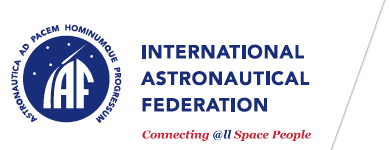session 3
- Title
Prediction, Testing, Measurement and Effects of space environment on space missions
- type
oral
- Description
The space environment can strongly impact the performance and reliability of space missions. It has several natural and induced components, including high-energy radiation, plasma, atomic oxygen, planetary dust, extreme te mperature, vacuum, micro-gravity, micrometeoroid and debris, molecular and particulate contamination, etc. Environmental conditions yield constraints at design phase, and important risks in the course of the mission. The evaluation of the nominal and worst-case conditions to be met, mitigation and protection options, and of their impact on missions and flight systems are thus of prime importance. This session will encompass the following topics: Space Weather, Plasma, Spacecraft Charging, Radiation, Atomic Oxygen, Planetary Dust, Molecular and Particulate Contamination, Plume Induced Contamination Effects and Interactions, Combined Environments - flight measurements; - physical processes; - prediction of nominal or worst case condition; - ground testing; - flight experiments and lessons learned; - modelling and prediction; thermos-optical degradation effects.
- Date
2025-10-02
- Time
- Room
- IPC members
Order | Time | Paper title | Mode | Presentation status | Speaker | Affiliation | Country |
|---|---|---|---|---|---|---|---|
1 | 10:15 | Assessing the Risks of Solar Activity on Suborbital Spaceplane Operations | 10 | confirmed | Dr. Christina Dunker | Nova Systems Pty Ltd | New Zealand |
2 | 10:25 | A novel methodology for simulating radiation effects on in-orbit Convolutional Neural Networks | 10 | confirmed | Mr. Eden Delmont | Swinburne University of Technology | Australia |
3 | 10:35 | 10 | confirmed | Ms. Rachita Agrawal | India | ||
4 | 10:45 | Effect of surface coating of solar array panel against levitating lunar dust | 10 | confirmed | Dr. Teppei Okumura | Japan Aerospace Exploration Agency (JAXA) | Japan |
5 | 10:55 | CubeSat Orbital Decay during the May 2024 Geomagnetic Storms | 10 | confirmed | Prof. Necmi Cihan Örger | Kyushu Institute of Technology | Japan |
6 | 11:05 | Lunar Regolith Consolidation Caused by the Thawing of Water Ice | 10 | confirmed | Mr. Nick Barnett | UNSW Australia | Singapore, Republic of |
7 | 11:15 | Mass of lunar volatiles required to reach spacecraft exposure limits - A Simulation Analysis | 10 | confirmed | Mr. Nick Barnett | UNSW Australia | Singapore, Republic of |
8 | 11:25 | 10 | confirmed | Mr. Lucas Rümmler | Jena-Optronik GmbH | Germany | |
9 | 10 | withdrawn | Prof. Dalia Elfiky | National Authority for Remote Sensing and Space Sciences (NARSS) | Egypt | ||
10 | 11:35 | AUS-SPARQ: A portable dosimetry system to standardise Australia’s space radiation qualification | 10 | confirmed | Dr. Jeremy Brown | Swinburne University of Technology | Australia |
